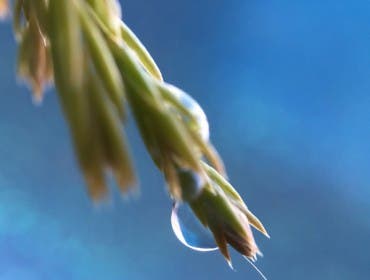Close-up photographs offer us a unique view of our world, especially when that world is pictured larger than life.
Capturing small subjects – insects, flowers, stamps, coins, and so on – requires careful attention to the technical aspects of photography: focus, lighting, sharpness, depth-of-field, exposure, and composition. Close-up photography also requires practice, due to the fact that slight camera adjustments are more exaggerated than they are when shooting subjects at normal distances.
For newcomers to the fascinating, fun, and rewarding world of close-up photography, here are a few points to consider. All of the pictures in this article were captured with my Canon EOS 1Ds, Canon ring lights, and Canon 50mm and 100mm macro lenses.
Practice. Before you set out to take some serious close-up pictures, practice at home using different f-stops, shutter speeds, and lighting set-ups. That’s what I did before embarking on a trip to Florida to photograph butterflies. I set up a mini-studio in our kitchen, which made my wife very happy, of course, and practiced day and night.
Lens selection. Zoom lenses with close-up settings are okay for some close-up photography. However, if you want to get much closer to your subject, you’ll need a 50mm, 60mm, or 100mm macro lens. Screw-on close-up lenses, sold in filter-like sets, are also available to get you closer to a subject. This picture was taken with a 50mm macro lens.
Tripod. Macro lenses, close-up lenses, and close-up settings on zoom lenses exaggerate the effects of camera shake. To reduce the chance of getting a blurry picture caused by a camera shake, use a tripod when taking a natural light macro picture.
Composition. The background can make or break a close-up picture. Try to compose your picture so the background is not brighter than your subject. It should also not be distracting.
Background. For close-up pictures of flowers and insects, try using your own background. I take close-up pictures of leaves and then make inkjet prints from those photographs. I mount the print on a piece of cardboard and then have an assistant hold my natural-looking background behind a subject.
Lighting. Natural light is often most pleasing for close-up pictures. When adding light, a ring light–which mounts on the front of a lens and provides even lighting–is a good choice. Using an on-camera flash can result in uneven and unflattering close-up lighting. I used a ring light to evenly light the subject in this picture.
Focus. In close-up photography, as with telephoto photography, focus is extremely critical. Be sure to focus on the most important element in a scene, such as the eye of an insect. It’s also important to shoot at a small aperture (f/11 to f/22) for good depth of field. I set my lens at f/22 for this photograph.
ISO. When choosing the film, ISO 100 film will produce pictures with fine grain. On your digital camera, select a low ISO setting, ISO 100 if available. I always try to shoot at ISO 100, as I did when taking this photograph.
Mist. Flowers look especially beautiful when covered with tiny water droplets. To create that effect, use a plant mister, available at garden centers.
Take a lot of pictures. Due to all the variables involved in close-up photography, taking several pictures of the same scene will increase your chance of getting that great shot.
Rick Sammon is author of The Complete Guide to Digital Photography, published by W. W. Norton. See www.ricksammon.com for details.



